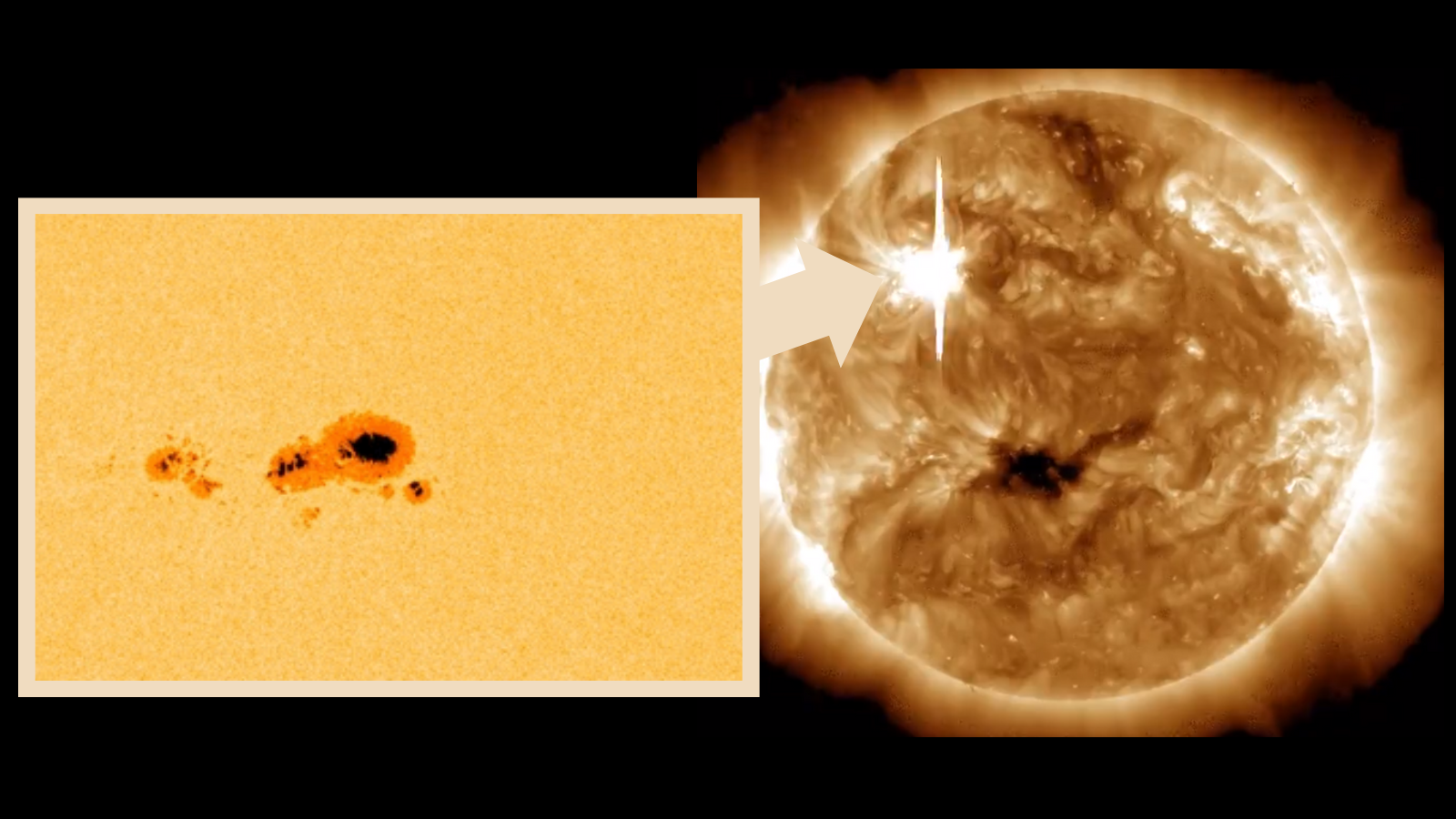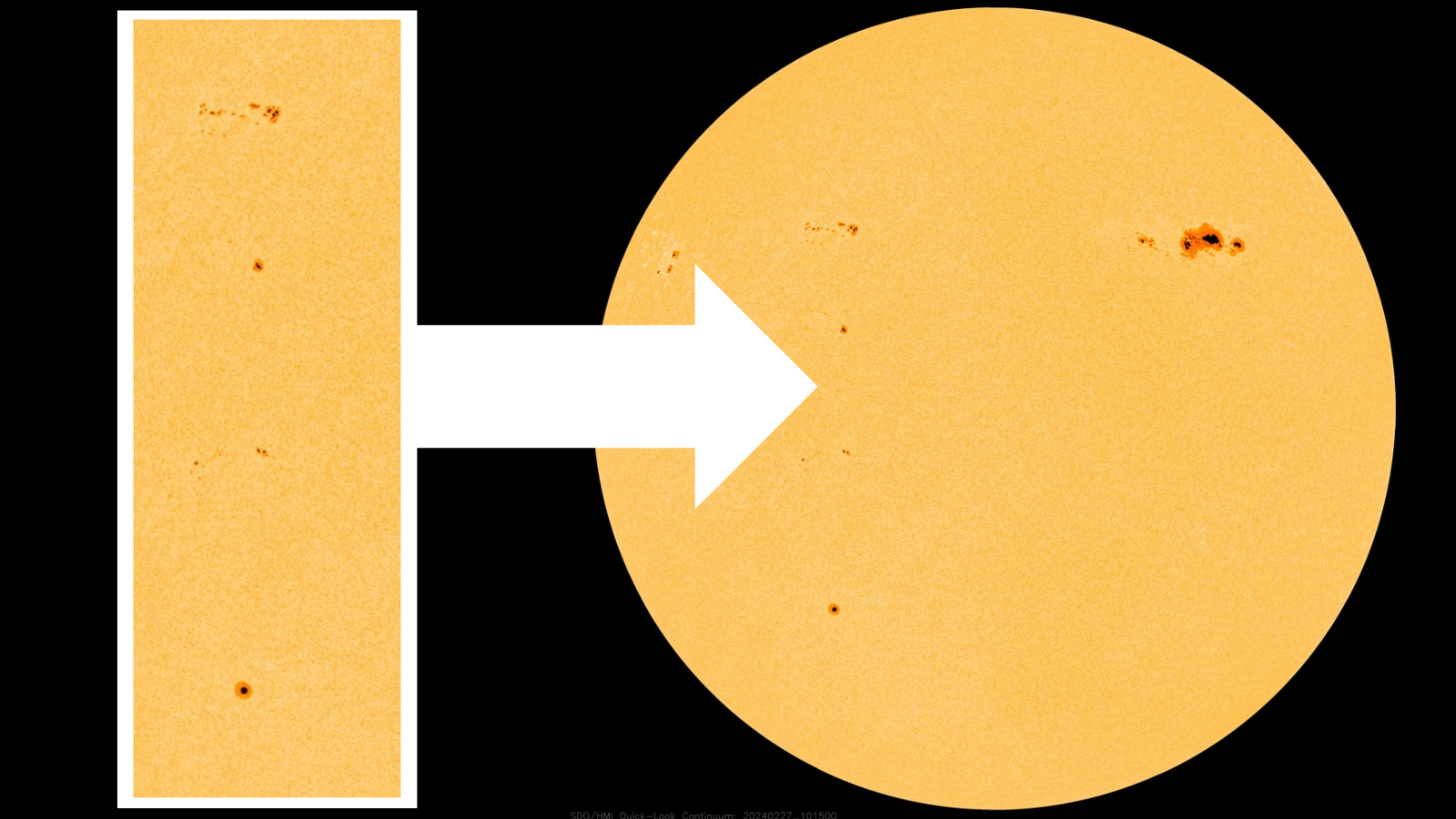
A giant sunspot continued to break records this week and is currently visible to the unaided eye with solar eclipse glasses.
Between Saturday (Feb. 24) and Monday (Feb. 26), as the sunspot known as AR3590 turned toward Earth, it also grew by around 25% to become the largest sunspot of the current 11-year solar cycle, solar cycle 25, measuring around 9.5 times the surface area of Earth.
NASA says that while it is never safe to look directly at the sun with unprotected eyes, eclipse glasses are perfect for observing sunspots. This sunspot provides such an opportunity because it is so large that skywatchers who have eclipse glasses to hand as they ready themselves for the total solar eclipse that will sweep over the U.S. on April 8 should be able to use them to glimpse AR3590 with the naked eye.
Related: Sun erupts with most powerful solar flare since 2017 amid explosive week (video)
Just two days before this weekend's remarkable growth, on Thursday (Feb. 22), the massive active region of the sun blasted out the most powerful solar flare of solar cycle 25. The X6.3 solar flare was the most energetic flare seen in 7 years since the peak activity of solar cycle 24, which ended in December 2019.
The X6.3 solar flare was the third of three flares from the AR3590 active region over a 24-hour period that began on Wednesday (Feb. 21) at 6:07 p.m. EST (2307 GMT) with the eruption of an X1.8 class flare. AR3590's tantrum continued at 1:32 a.m. EST (0632 GMT) on Thursday with the eruption of an X1.7 class solar flare.

Astrophotographer Peter Lewis tracked the growth of the sunspot over a period of 6 days, including the weekend. He posted images of the changes AR3590 underwent to his X feed.
Giant Sunspot group AR3590. 6 successive days of growth. More than ten times wider than Earth, it's now officially the largest of Solar Cycle 25 so far. #SunSpot #Solar #StormHour #SunHour pic.twitter.com/ixZ7RhfsxAFebruary 26, 2024
The largest sunspot of solar cycle 25 is now around 60% the size of the monster sunspot that was responsible for the solar storm known as the Carrington Event. The solar storm occurred in September 1859, a few months prior to the sun reaching solar maximum in 1860. During the Carrington event, Earth was lashed with outflows of solar plasma called coronal mass ejections (CME). This originated from solar flares connected to this huge sunspot and caused an unprecedented geomagnetic storm on Earth.
AR3590 wasn't the only notable solar activity over the last week. As this record breaking sunspot rotated toward the right limb of our star on Monday (Feb. 26) a vertical allignment of sunspots rotated into view.

The vertical alignment is strange because sunspots usually run horizontally across the sun's lines of latitude. The perpendicular line-up might mean nothing, or it could indicate something odd happening in the magnetic field of the sun.
The sun's magnetic field is believed to be responsible for creating both dark, cool patches in the sun's surface that we call sunspots in addition to the space weather events that erupt from them.
Sunspots like AR3590 are thought to be created when the rotation of the sun causes magnetic field lines to become tangled. This eventually leads to these field lines snapping and reconnecting, and this magnetic reconnection can launch solar flares into space.
Because plasma is made up of charged particles, it travels down these magnetic field lines. That means when they break, this plasma is launched out as CMEs, explaining why CMEs often accompany solar flares. When CMEs hit Earth's magnetosphere, the effects they generate can cause beautiful auroras called the Northern and Southern Lights but can also cause disruptions to power and communication infrastructure.
Oddly, no CMEs have been associated with AR3590 despite it being responsible for 3 X-class flares and a series of less powerful M-class flares. That means the region will not cause geomagnetic storms over the coming days.
The sun is expected to reach peak activity, also known as solar maximum, for solar cycle 25 at some point this year. Solar maximum will be marked by an increase in sunspot activity and violent outbursts like solar flares and CMEs.







